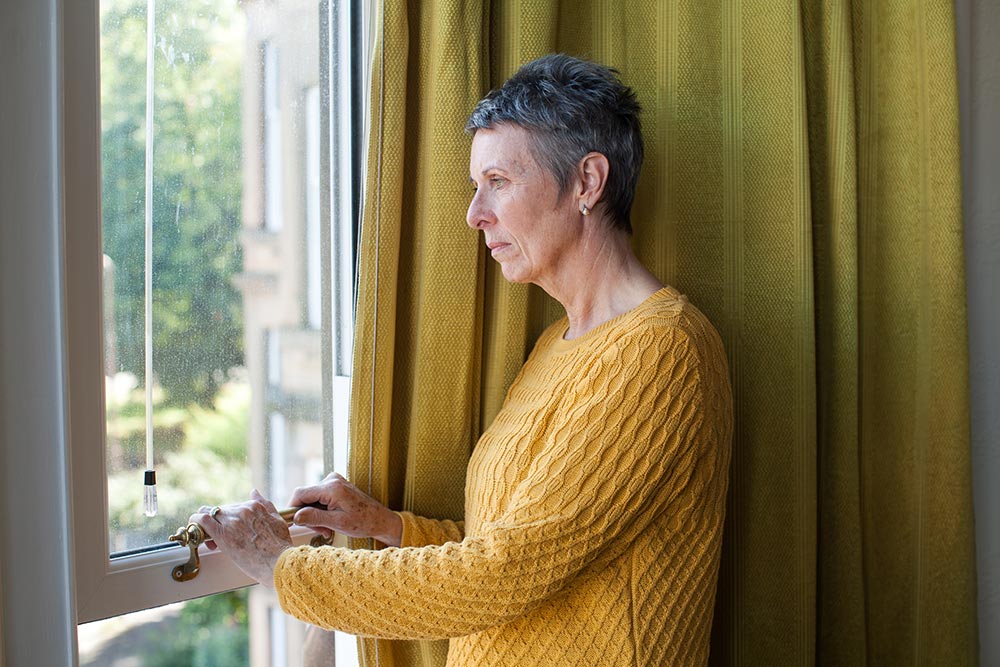What is coercive control?
Domestic abuse isn’t always physical. Coercive control is an act or a pattern of acts of assault, threats, humiliation and intimidation or other abuse that is used to harm, punish, or frighten their victim.
Coercive and controlling behaviour is at the heart of domestic abuse.
This controlling behaviour is designed to make a person dependent by isolating them from support, exploiting them, depriving them of independence and regulating their everyday behaviour.
We campaigned and succeeded in making coercive control a criminal offence since 2015. This has marked a huge step forward in tackling domestic abuse. But now we want to make sure that everyone understands what it is.
Coercive control creates invisible chains and a sense of fear that pervades all elements of a survivor’s life. It works to limit their human rights by depriving them of their liberty and reducing their ability for action. Experts like Evan Stark liken coercive control to being taken hostage. As he says: “the victim becomes captive in an unreal world created by the abuser, entrapped in a world of confusion, contradiction and fear.” (Stark, 2007).
How do you know if this is happening to you?
Some common examples of coercive behaviour are:
- Isolating you from friends and family
- Depriving you of basic needs, such as food
- Monitoring your time
- Monitoring you via online communication tools or spyware
- Taking control over aspects of your everyday life, such as where you can go, who you can see, what you can wear and when you can sleep
- Depriving you access to support services, such as medical services
- Repeatedly putting you down, such as saying you’re worthless
- Humiliating, degrading or dehumanising you
- Controlling your finances
- Making threats or intimidating you
Statistics on coercive control
- There were 43,774 offences of coercive control recorded by the police in England and Wales (excluding Devon and Cornwall) in the year ending March 2023. This is an increase from 41,626 in the year ending March 2022, and 33,954 in the year ending March 2021 (ONS, 2023a).
- There were 811 defendant proceedings and 566 offenders convicted of controlling or coercive behaviour in the year ending March 2023 in England and Wales (where controlling or coercive behaviour was the principal offence (ONS 2023b).
- Almost all those convicted for controlling or coercive behaviour in England and Wales in the year ending March 2023 were male – 553 out of 566 (97.7%) (ONS, 2023b). Although the ONS publication does not give the sex of the victims, we know from other research (as below) that the majority of victims are likely to be women.
- One study of Crime Survey for England and Wales data found that women are far more likely than men to be the victims of coercive controlling behaviour abuse that involves ongoing degradation and frightening threats – two key elements of coercive control. Working within the limitations of the current crime survey questions, the study found that among intimate personal violence victims who had experienced only one abusive relationship since the age of 16, almost a third (30%, n = 791) of the abuse reported by female respondents could be classified as coercive control in this way, contrasting with only 6% (n = 52) of the abuse reported by male respondents (Myhill, 2015).
- Analysis of Merseyside Police domestic abuse data found that 95% of coercive control victims were women and 74% of perpetrators were men. 76% of coercive control cases happened within an intimate partner context. The study found that common abusive behaviours used in coercive control included “…use of technology (such as phone trackers, controlling social media usage, barrage of text messages or monitoring phone usage), sexual coercion, monitoring behaviours, isolation, threats, financial abuse, deprivation (depriving access to support) and physical violence (63% of coercive control cases featured reports of physical violence)” (Barlow et al, 2018).
Getting help and advice
Live Chat
We know talking to someone else about your personal life can be hard, but getting in touch with us can be your first and most important step.
The Survivor’s Handbook
Provides practical support and information for women experiencing domestic abuse, with simple guidance on every aspect of seeking support.
Forum
Speak to other women in our supportive community of domestic abuse survivors or send an email to a Women’s Aid domestic abuse support worker.





